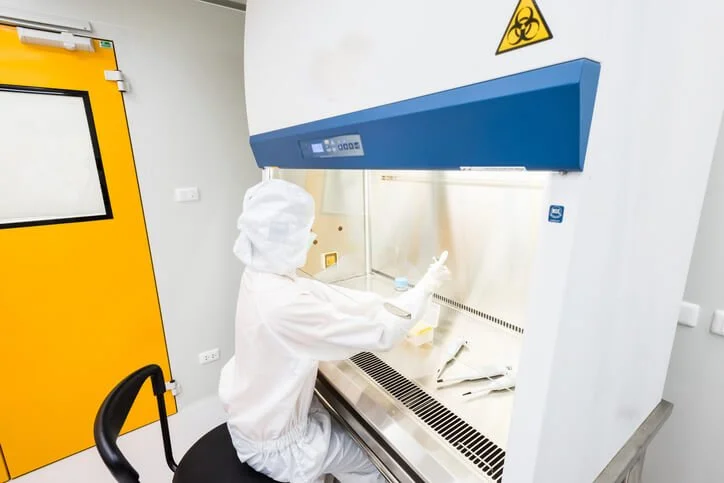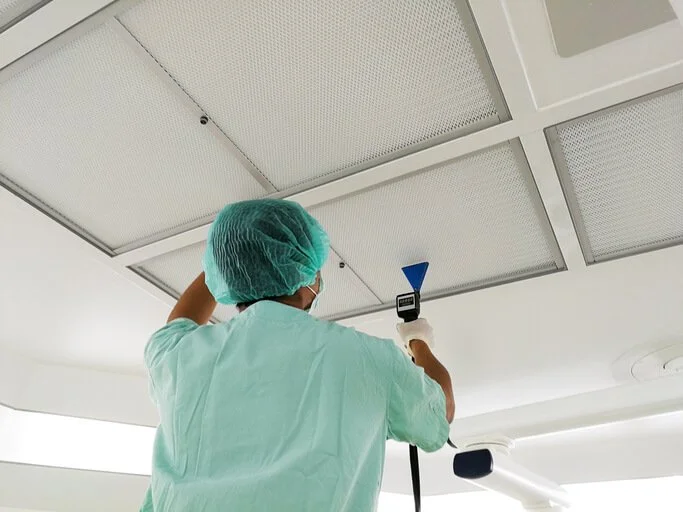
BIOLOGICAL SAFETY CABINETS
HEPA FILTER TESTING
/
FUME CUPBOARD TESTING
/
BIOLOGICAL SAFETY CABINETS
/
CLEAN WORK STATIONS
/
CYTOTOXIC DRUG SAFETY CABINET TESTING
/
CLEANROOM VALIDATION
/
HEPA FILTER TESTING / FUME CUPBOARD TESTING / BIOLOGICAL SAFETY CABINETS / CLEAN WORK STATIONS / CYTOTOXIC DRUG SAFETY CABINET TESTING / CLEANROOM VALIDATION /
Biological Safety Cabinets (BSCs) are among the most critical pieces of laboratory equipment, using advanced airflow and HEPA filtration to protect personnel, products, and the environment from biological hazards. Reliable testing is essential to ensure they perform as intended.
Many laboratory-acquired infections result from aerosols generated during routine procedures. If a BSC fails, these invisible hazards can escape containment - putting staff safety, research integrity, and regulatory compliance at risk.
Regular testing ensures cabinets perform reliably when safety matters most.
Why is Testing
Essential?
Protection
Classifications
Class I - Protect personnel and environment through inward airflow and HEPA-filtered exhaust.
Class II - Triple protection: personnel, environment, AND products via laminar airflow technology.
Class III - Maximum containment for the most dangrous biological agents.
Schedule your BSC testing today - your safety depends on systems that work.
Comprehensive Certification
/02
WORK ZONE PROTECTION
Complete containment validation.
/04
OPERATIONAL SAFETY
Noise, luminance, alarms, and UV radiation (where applicable).
/01
AIRFLOW PERFORMANCE
Velocity, uniformity, and containment verification.
/03
HEPA FILTER INTEGRITY
Installation and filtration effectiveness.
Our NATA accredited testing ensures full compliance with Australian Standards AS 2252.1-3.








